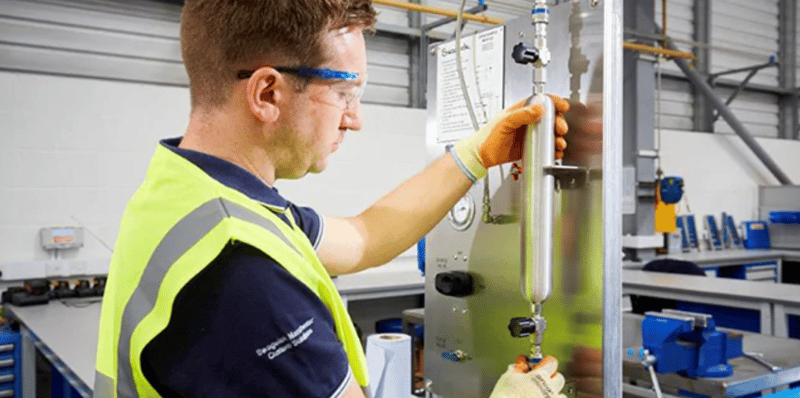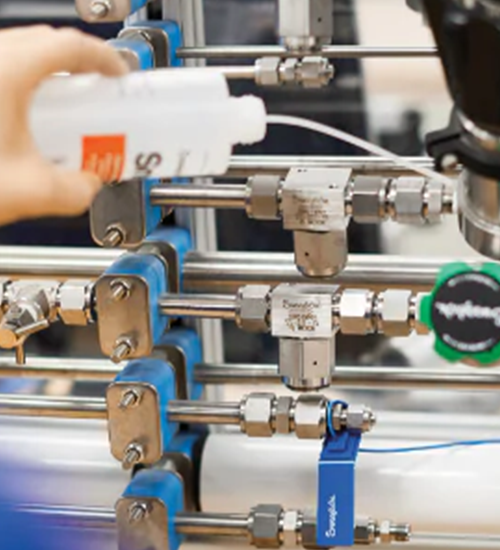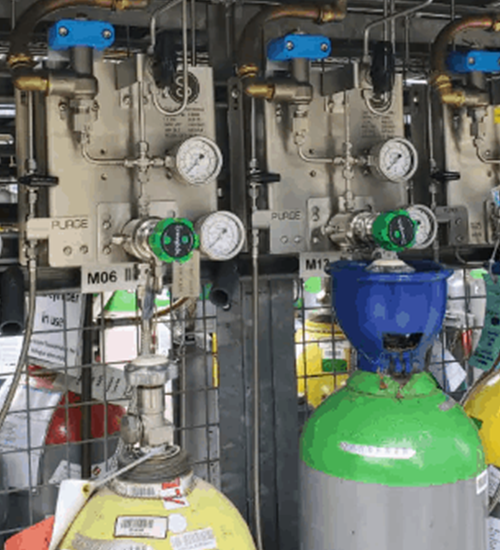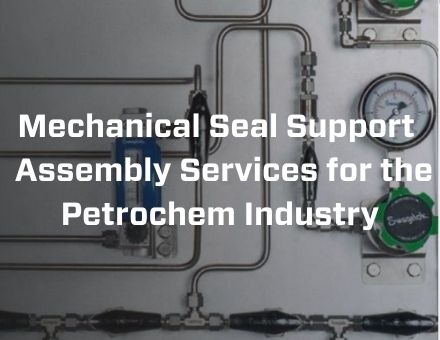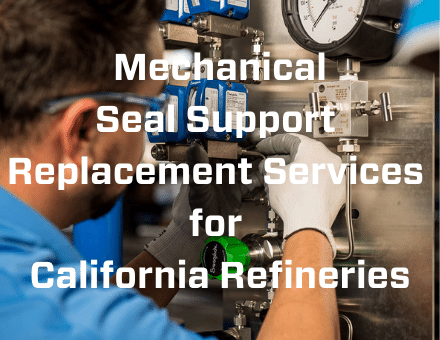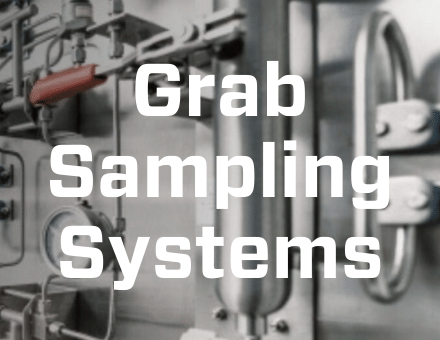Keeping up with California’s stringent safety and compliance regulations passed down from Cal/OSHA is a full-time job. And it doesn’t just take one person, it takes a team to stay on top of the everyday checks that ensure smooth operations. But they can’t do their job right if they are dealing with aging, failing, or inappropriate equipment.
But let’s get honest here. It’s been a hard year since COVID-19 hit and supply chains are challenged. How many times were one of your operators unable to get a gas sample done because you didn’t have the right cylinder on hand? Or, maybe they got a sample but it wasn’t actually representative of the process. Worst case scenario might be that a valuable team member gets exposed to a gas and you have to file a report.
Gas sampling is critical to ensure safety, maintain regulatory compliance, and secure long-lasting effective processing while limiting costly maintenance issues. In this industrial gas sampling guide, we will examine the methods for gas sampling and the quality products that can help processing and manufacturing plants meet gas sampling needs while maintaining safety and compliance.
Gas Sampling Methods
Gas sampling allows operators to be aware of impurities entering the system which, if this issue is corrected, will limit damage to components of the system and ultimately lower maintenance and replacement costs. Further, by determining the molecular composition of processing gases and subsequently the characteristics of those gases—such as boiling point and reactivity—operators will be able to make better-informed decisions to maintain pressure, temperature, and flow throughout the system. Understanding the molecular composition of processing gases can reduce corrosion or reduce unwanted chemical reactions, as contaminants could alter the process chemical substantially through molecular formation and recombination.
In most instances, gas sampling is done by grab sampling and active sampling. Each method has different use cases depending on the process involved. In some instances, sampling only needs to be done periodically (per quarter). Grab sampling provides a cost-effective means to determine if contaminants have entered the system or if leaks are occurring. Active sampling provides a means to continuously monitor gas samples and is beneficial to quickly determine if any contaminants have entered the system and this is particularly important if the product is easily suspect to damage from contaminants.
The Importance of High-Quality Components for Gas Sampling Safety and Compliance
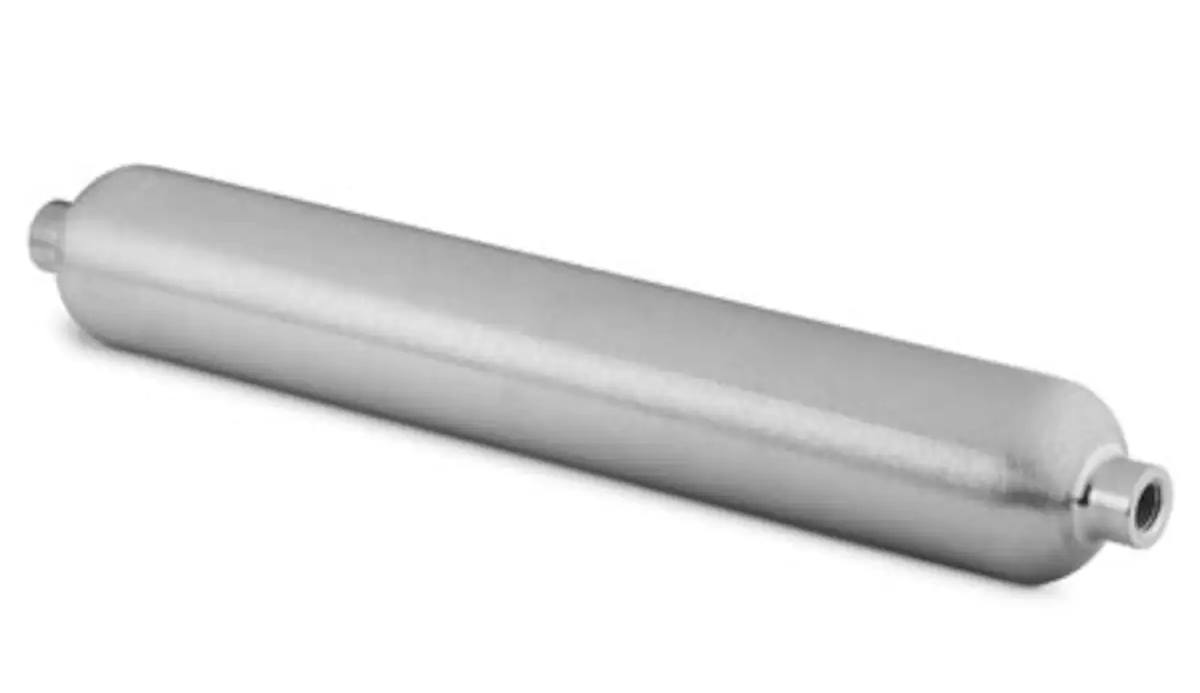
Quality components, such as the cylinders for transportation, are needed for accurate measurements of gas composition, regardless of the type of sampling used. These cylinders need to be properly rated for the appropriate pressure and temperature and should be tested regularly. They are often transported while the gas inside is under high pressure. Quality cylinders that are regularly tested are needed to ensure proper workplace safety. They should be equipped with a bypass line (to purge potentially dangerous chemicals after testing), a neck transition that allows for ease of cleaning, and quick connects to allow for safe disconnecting from the sampling source. Cylinders that have these components will ensure safety by preventing sample technicians from potential exposure to harmful chemicals.
The importance of gas sampling and gas sampling components are indisputable; let’s discuss these gas sampling methods and how processing and manufacturing plants can meet safety and compliance standards in Northern California.
The Grab Sampling Method
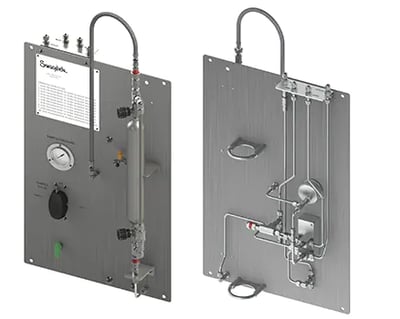 This sampling method involves taking a small sample of the overall gas and then sending it to a lab for analysis. For this method to be effective, the small sample needs to properly represent the overall gas sample. Grab sampling does not require continual monitoring of gas (which can be beneficial for operational costs) but is labor-intensive and requires a dedicated operational plan to obtain samples that accurately represent the gases in process. Grab sampling systems can also be more easily integrated into existing infrastructure than active sampling. Grab sampling is a great option for factories and refineries that need to update infrastructure and for processing where continual monitoring is not as critical as in other processing and manufacturing.
This sampling method involves taking a small sample of the overall gas and then sending it to a lab for analysis. For this method to be effective, the small sample needs to properly represent the overall gas sample. Grab sampling does not require continual monitoring of gas (which can be beneficial for operational costs) but is labor-intensive and requires a dedicated operational plan to obtain samples that accurately represent the gases in process. Grab sampling systems can also be more easily integrated into existing infrastructure than active sampling. Grab sampling is a great option for factories and refineries that need to update infrastructure and for processing where continual monitoring is not as critical as in other processing and manufacturing.
Grab Sampling Systems
In grab sampling systems, the cylinder used for transportation and the components within the system need to be composed of corrosion-resistant material that can hold gases at the requisite pressure and temperature. The system also needs to connect and disconnect without leakage of gas to the surrounding environment. Swagelok provides gas sampling systems that include a standard design, a standard design with purge, a continuous flow design, and a continuous flow design with purge.
The continuous flow or discrete flow options are dependent on if gas flow can be turned off for limited amounts of time without disrupting operations. If gas flow can be shut down, the standard design or the standard design with purge, are available. If gas flow needs to be continuous for effective operations, the continuous gas flow to be switched between cylinders while gas is collected.
The purge option - available in both continuous and discrete gas flow designs - allows for sample fluid to be cleared from the lines before and after sampling occurs. The need for a purge option is highly dependent on the operation as for the potential for fluid to contaminate samples.
The Active Sampling Method
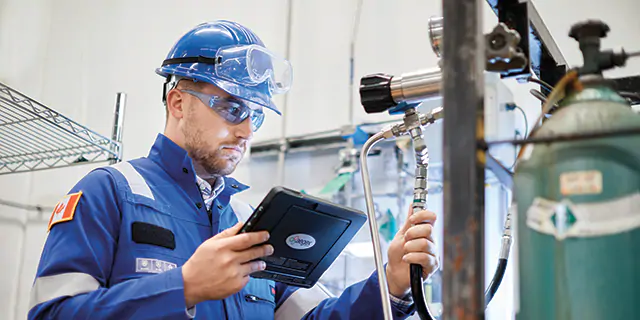
Active sampling, also known as continuous online sampling, continually monitors gas by using energy to actively pump gas into a sorbent medium. Active sampling requires additional equipment. This type of sampling needs gas detectors and pumps that are properly integrated into distribution systems. Continual monitoring is beneficial when the gas composition is suspected to not be consistent.
The decision to utilize active sampling—as opposed to grab sampling—is highly dependent on the operational needs. Though active sampling requires additional equipment, it is less influenced by environmental conditions—such as temperature and pressure—and provides a more accurate sample for analysis in some situations. It is typically more costly to incorporate active sampling into systems but provides the continual monitoring and recommended if even the smallest contaminant will cause product issues. For instance, semiconductor manufacturing is particularly susceptible to minute particles causing significant damage to the product.
Active Sampling Systems and Accessories
Active sampling systems need a host of accessories—a detector, pump, and the requisite tubing and connections. These components occasionally need maintenance and may require additional sampling systems to ensure the continuous monitor of gas composition. Swagelok experts can provide consultations to assist operators with incorporating these components into the existing infrastructure and performing updates.
Though gas monitoring is critical for successful operations and ensuring safety and compliance, the operational components themselves play an equally important role. Determining which components need to be upgraded and the systems needed for gas sampling operations can be difficult. Talk to a local expert to meet your gas sampling needs.
Let Local Experts Guide Industrial Gas Sampling Operations
Gas sampling plays a critical role in meeting safety and compliance regulations in Northern California refineries. The methods for gas sampling mentioned above prioritize safety and compliance. Quality components mitigate risk and improve production and safety. Though following gas sampling methods and utilizing quality components will help achieve safety and compliance regulations, there is another strategy to identify problems early and improve compliance outcomes—work with a local expert.
Swagelok has the quality components and the experts to help identify and mitigate potential problems before they are exacerbated. Further, Field Engineers at Swagelok can help with gas distribution system design and implant quality components that fully integrate with the existing infrastructure, minimizing operational delays and maintaining safety and compliance.
To find out more about how Swagelok Northern California can guide your industrial gas sampling operation with safety and compliance in mind, contact our team today by calling 510-933-6200.


